Health Signals You Can Get from Your Tongue
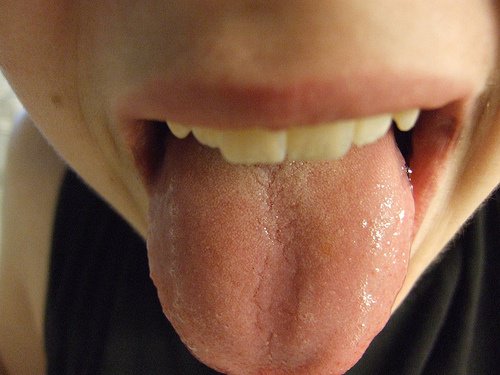
Now that you’re an adult, you may want to spend a few minutes in front of the mirror observing what your tongue looks like. Believe it or not, it could be hiding a lot of information. Did you know that your tongue sends tons of health signals? Learn more in the following article!
Your tongue, a reflection of different health signals
They say that eyes are the window to the soul… which would make the tongue a reflection of your health. For hundreds of years, Ayurvedic doctors have examined their patients’ tongues to determine whether or not they suffer from some kind of illness.
The three main parts of the tongue, according to this branch of traditional medicine, are: vata (root), pitta (middle) and kapha (tip). The color and texture of your tongue may indicate whether you are healthy or sick.
This muscle, which allows us to enjoy the flavors of different foods, is an extension of the stomach. Therefore, it reflects the state of your gastric system. It has thousands of nerve endings, and each one (sometimes several) is associated with a different part of the body.
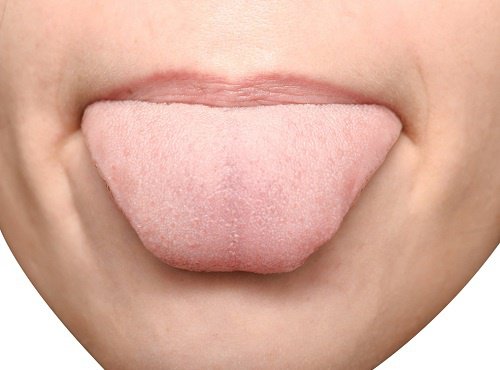
The white layer that appears on the surface of your tongue is normal, as long as it is a thin layer. This has more to do with dental hygiene and how often you brush you teeth than with whether or not you’re sick. Make sure to brush your tongue as indicated by your dentist.
Read also:
Color and texture of the tongue: what to keep in mind
You don’t have to be an Ayurvedic doctor to figure out if suffering from an illness or other health problems. You can analyze two important characteristics of your tongue, its color and texture, to figure out what shape your health is in:
Colors
As previously mentioned, a healthy tongue should be pink. If it’s a darker red color, this is a signal that your body is inflamed, and could even point towards a certain type of cancer. If your tongue is more brown in color or has lost some of that pink tone, it could be because you smoke a lot. A bright pink could be an indication of Scarlet fever.
If your tongue is pale in color, this means that you are not getting enough nutrients and that the level of hemoglobin in your body is quite low. However, if the white layer on your tongue is very thick, it could be the result of fungi (candidiasis) or unbalanced bile secretion.
If that white layer only appears on the sides of your tongue, you may be suffering from some kind of lung disease. And if it is yellow, it may be a sign of cholecystitis.
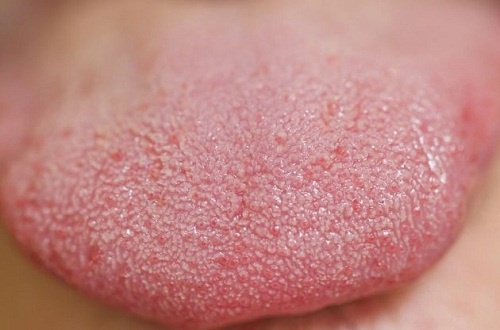
Texture and surface
As we said before, a healthy tongue should be moist and smooth. But be careful with regards to this point, because a tongue with no texture at all could be a signal of anemia or iron deficiency.
If you have spots toward the back of your tongue, you may suffer from allergies. Canker sores are an indication that you consume too many refined sugars, fats or proteins.
When your tongue is dry, it probably means that you are stressed out (although it may also indicate an over-production of mucous, anemia or diabetes).
If your tongue tends to swell up, this may be due to a number of causes, such as heartburn, constipation, diarrhea, or chronic gastritis. Flat taste-buds (instead of having a subtle texture) may indicate an intestinal disorder.
Other health signals to look out for
Pay attention to what you tongue looks like. You may be suffering from an illness without realizing it.
Crevice in the middle
If this line doesn’t reach the tip of your tongue, it means that you have a weak stomach or that you’re suffering from digestive problems. This may be due to a lack of nutrients. You may have gas, or feel like you don’t have enough energy to get through the day.
To solve this problem, eat a healthier diet. You can try not to mix different food groups, such as fruit and protein. Do whatever you can to speed up your digestive process. Also, try eating an apple or pear on an empty stomach.
Canker sores
If you find that you have lots of canker sores in your mouth, or if you get them on a regular basis, this could be an indication that you are lacking certain nutrients such as vitamin B6, iron or niacin. Eat more lentils, red meat, eggs and dairy products.
We recommend:
Make a cup of nettle tea and, if you continue to feel ill, make an appointment with your doctor. They can prescribe a blood work to make sure you don’t have anemia.
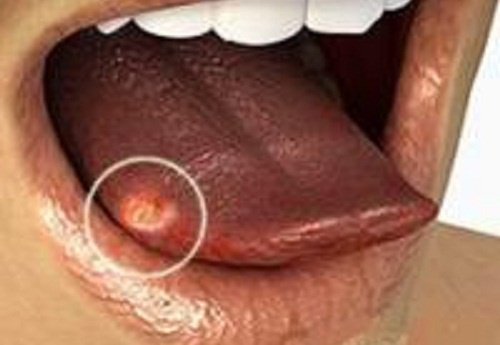
Small horizontal crevices
Crevices are health signals that may indacate your body is not absorbing minerals as it should. Another sign of this problem is a lack of energy or vitality. Although your tongue does have a number of small grooves, problems tend to arise when you have a greater number of large crevices.
One way to solve this problem is to eat foods that will help nourish your spleen. You could eat barley, beets, oatmeal, parsley, carrots, squash, celery, cabbage and swiss chard.
Red dots
In addition to being a physical annoyance, this condition may indicate an emotional problem. It may be a signal that you are too stressed, sad, depressed, anxious, distressed or nervous. To prevent this problem, try to stay on the positive side and search for solutions to your problems.
You can also try consuming different natural herbs that help balance your emotions. Lemon balm, chamomile and Valerian root are all very helpful. At dinnertime, make sure to include avocado, cucumber and almonds.
Swollen with a thick white layer on top
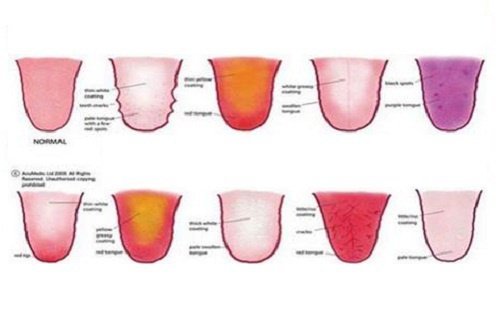
This means that there is too much mucous in your body, or that your body lacks certain good bacteria; remember, not all bacteria is bad. To fix this situation, we recommend that you stop consuming dairy products and that you add more green foods to your diet (broccoli, cabbage, peas, lettuce, celery, swiss chard, spinach).
All cited sources were thoroughly reviewed by our team to ensure their quality, reliability, currency, and validity. The bibliography of this article was considered reliable and of academic or scientific accuracy.
Mantilla Gómez, S., Danser, M. M., Sipos, P. M., Rowshani, B., Van Der Velden, U., Van Der Weijden, G. A., & Van Der Weijden, F. (2001). Tongue coating and salivary bacterial counts in healthy/gingivitis subjects and periodontitis patients. Journal of Clinical Periodontology. https://doi.org/10.1034/j.1600-051x.2001.028010970.x
Shiboski, C. H., Schmidt, B. L., & Jordan, R. C. K. (2005). Tongue and tonsil carcinoma: Increasing trends in the U.S. population ages 20-44 years. Cancer. https://doi.org/10.1002/cncr.20998
This text is provided for informational purposes only and does not replace consultation with a professional. If in doubt, consult your specialist.








